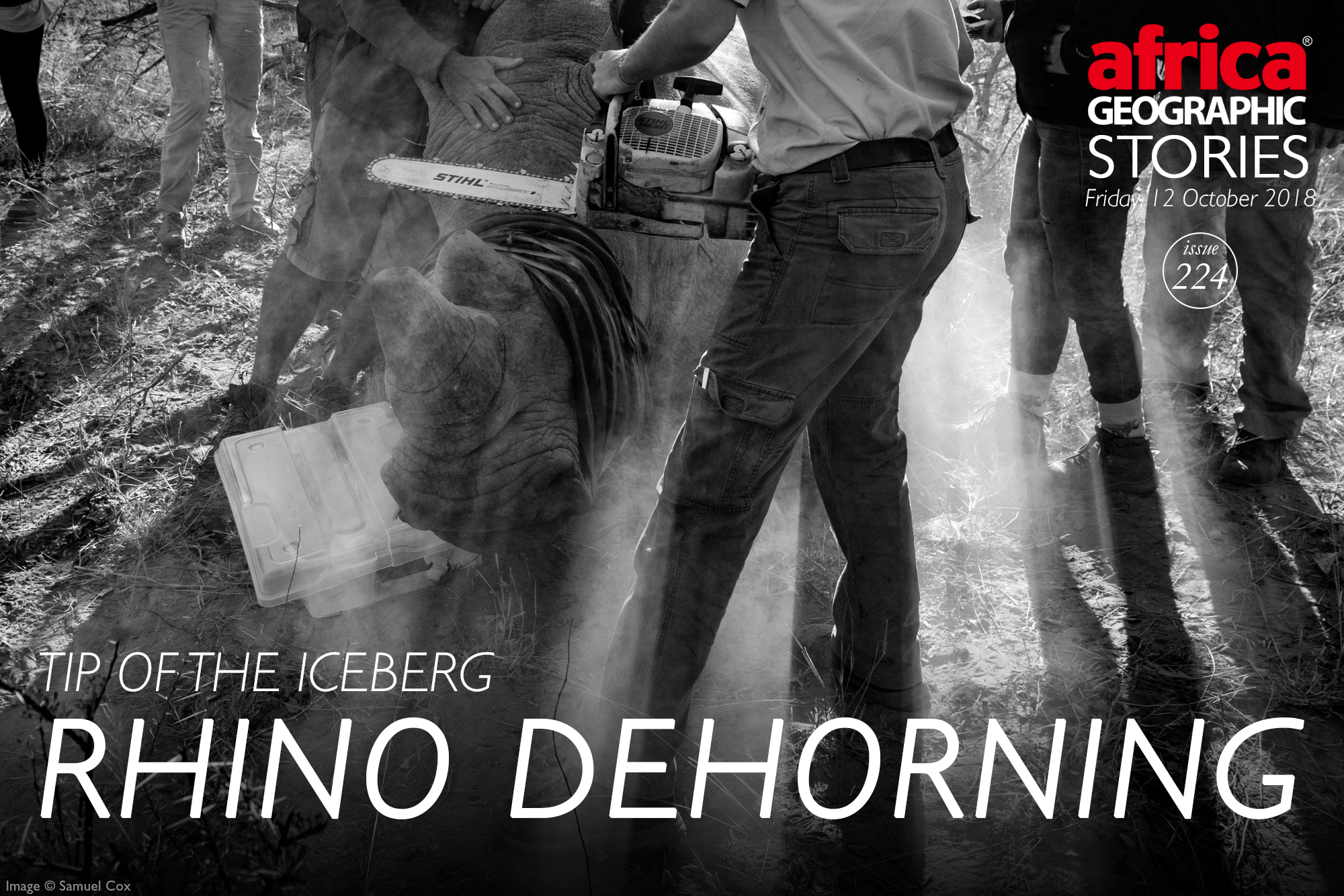
Experiencing a rhino dehorning firsthand


Before coming to Africa, I had little to no knowledge of the constant efforts being made to save our precious rhinos – one of Africa’s most iconic animals. Not long after arriving, however, I had the opportunity to photograph and assist in a rhino dehorning operation, a somewhat controversial method of hopeful poaching prevention, and got to witness firsthand how the process is done.
It was a day full of adrenaline and mixed emotions, and looking back, it is hard to describe all the feelings that came and went while being on the ground and in the thick of such a delicate undertaking.
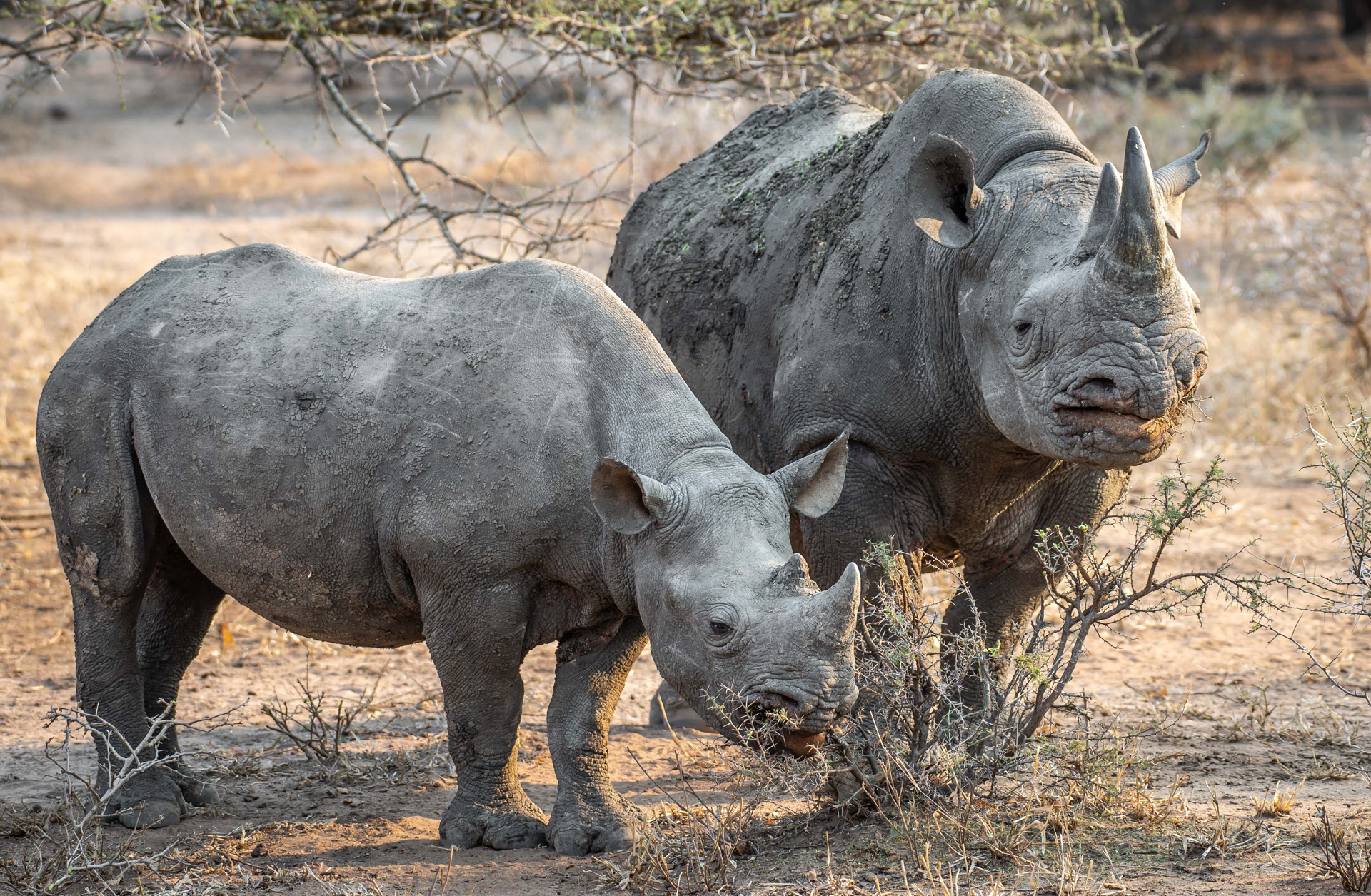
Early in the morning, we joined a group of photographers, researchers and vets on the boundary of the reserve. It was cloudy and cold, somewhat symbolic of the harsh realities we were about to face, but there was a sense of excitement too, if not just from the circling helicopter flying low and kicking up dust.
The lead vet had briefed everybody on every detail and aspect of the operation, what we were after, why, and how every step in the procedure was so important. After that run through, we got into our vehicles and waited as the helicopter took flight to find the first patient. Within only a few minutes the radio crackled to life, and we were off…

Dust plumes covered the roads as we drove hastily in convoy to the area where the rhino had been tranquillised from the air and approached the scene once the vets had sprung into action.
It was a blur of freneticism, but perfectly organised and communication between everyone was flying as the white rhino lay on the ground surrounded by people who just a few minutes ago were all patiently waiting for the call. Everybody was a helping hand, whether it was carrying heavy equipment, administering antiseptics, supporting a supply of oxygen or applying brute strength to manoeuvring the immobilised giant, so he didn’t lose lung capacity or the feeling in his legs (2,000 kg is a lot of weight, after all).
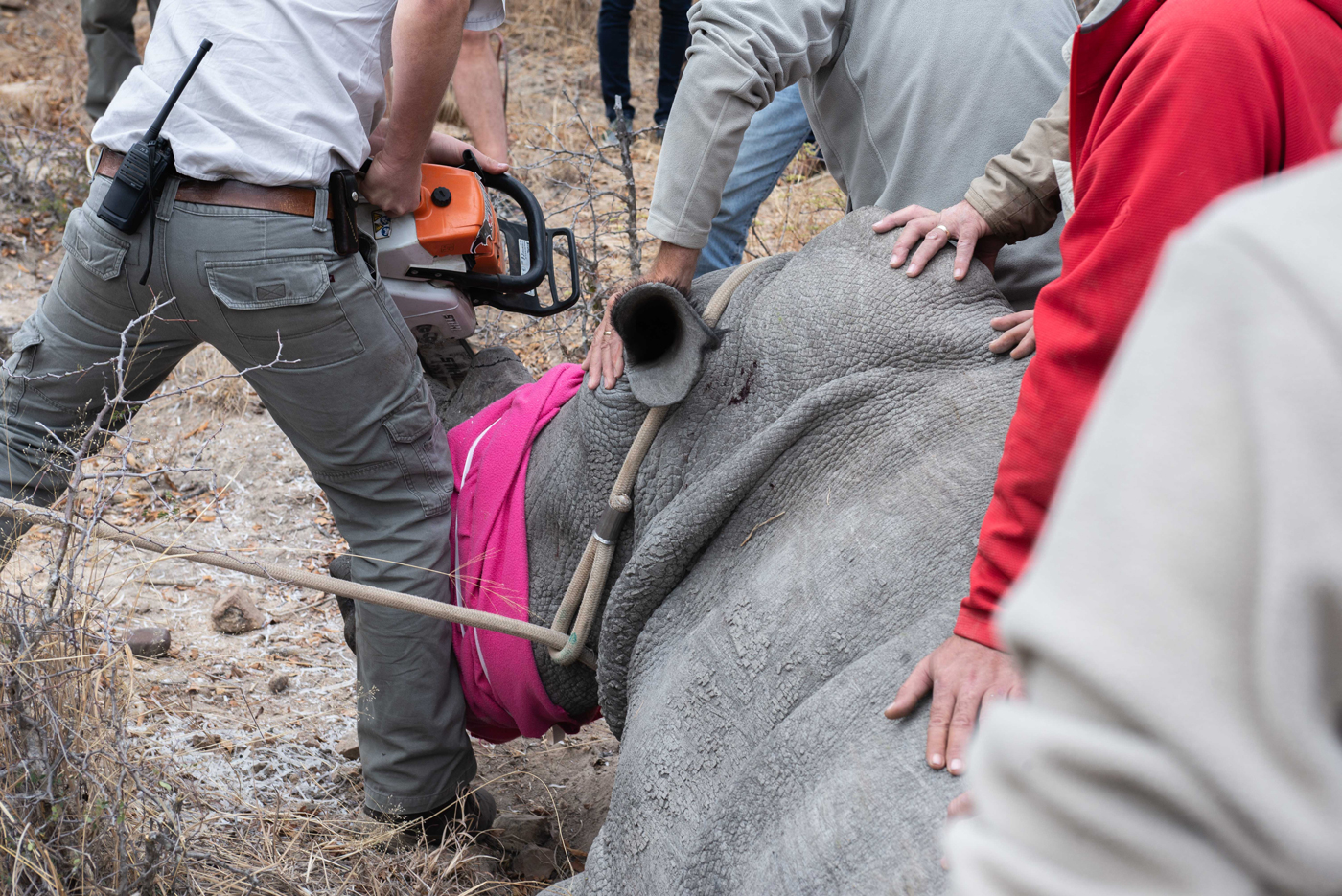
His eyes were treated with a moisturiser before being covered, and the ears were plugged before the buzzing of the chainsaw ripped through the air. It’s impossible to convey how quick this all happened, as before we knew it the horn was being sawed off, with shards and dust flying everywhere.
It initially surprised me to see how much the shards resembled nail clippings, before realising it’s the exact same material after all – keratin.
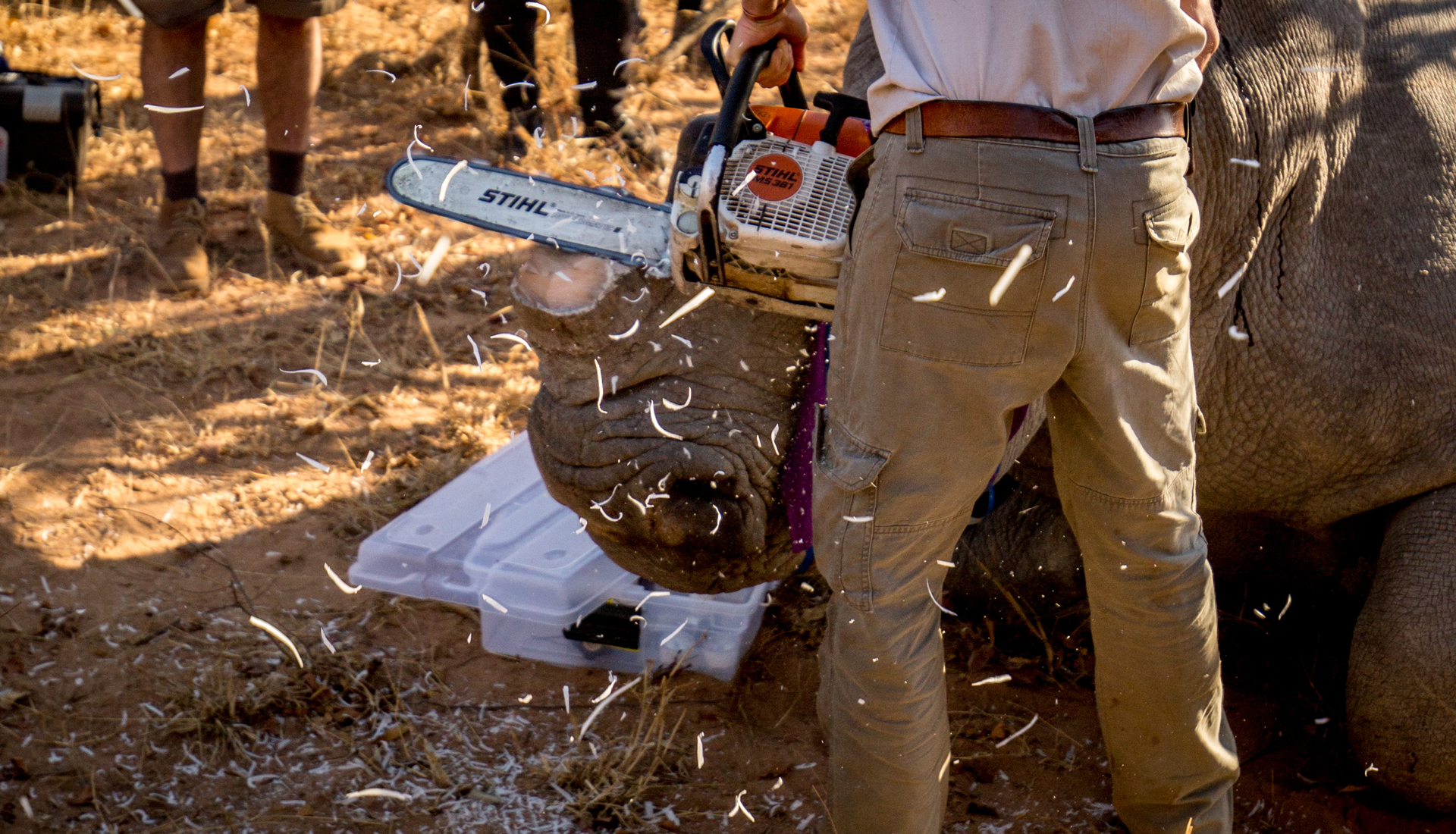
The smell produced during that moment eliminated any feelings of excitement and made me question exactly why we have to do this to these beautiful animals?
That we must take something so iconic and important to them, to ultimately protect them from ourselves. I had to think for a minute about the lengths we go to because of the cruelty of mankind, and seeing the chainsaw, the tubes, syringes and surrounding vehicles caused a momentary emotional retreat from the scene.
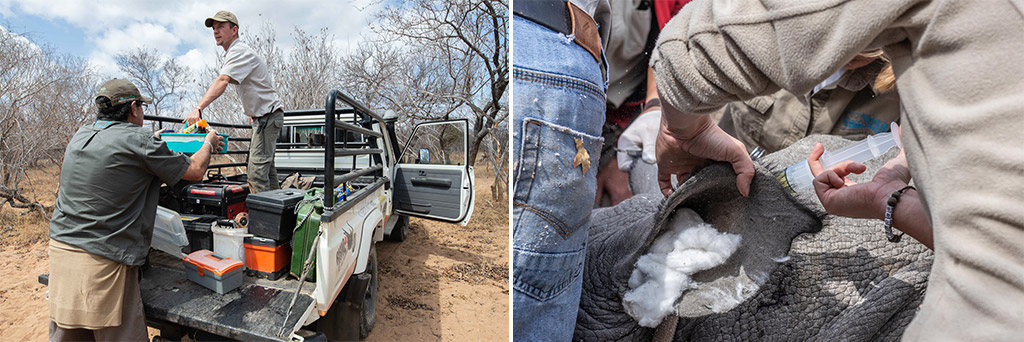
After the horn removal, the remaining stump was smoothed down to prevent any future damage, and treated with antiseptic. Temporary orange paint was applied as a marker for the helicopter so they could identify which rhinos had already been dehorned throughout those couple of days in which the operation occurred, and a dose of adrenaline was administered to counteract the immobilising drug. We were back on our vehicles moments before the poor rhino stumbled to his feet, no doubt confused, disorientated, and slightly unamused. It was a beautiful moment to see this animal back on his feet again, but it wasn’t the time to relish the victory as there were more rhinos to find.
This was just the first of many to be done in this reserve.
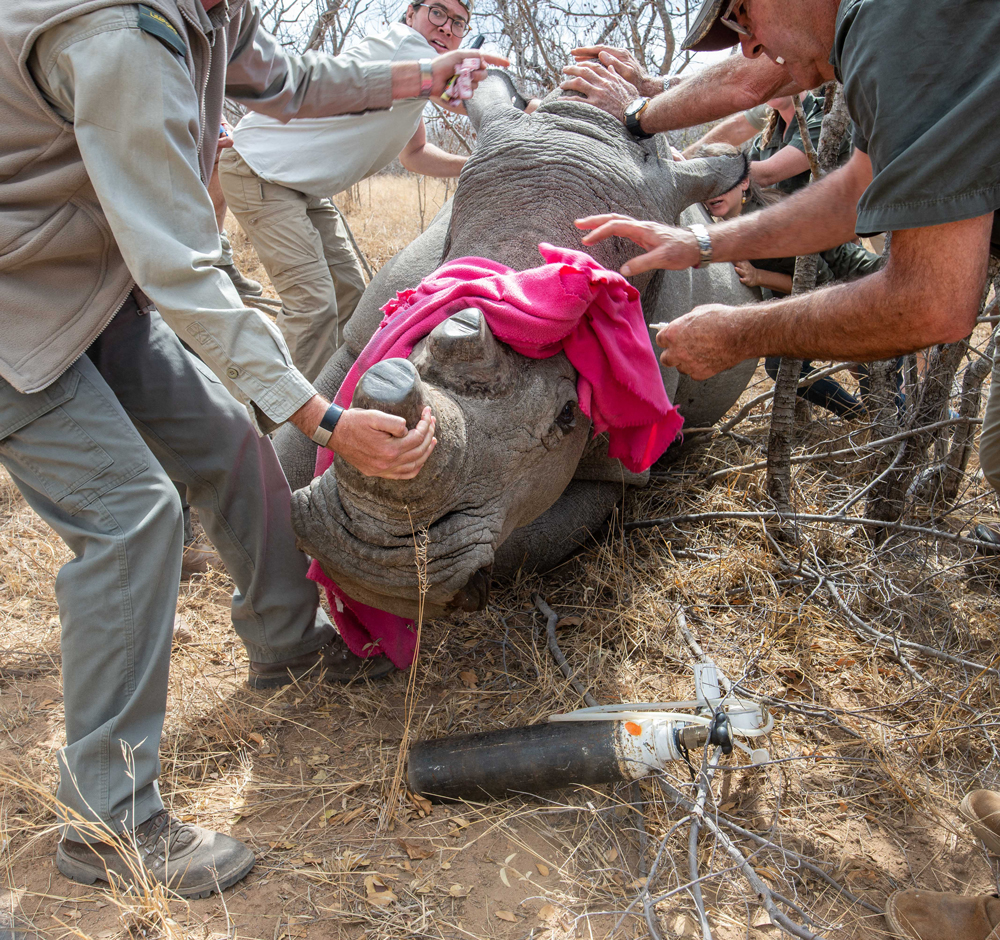
Throughout the rest of the morning, four more rhinos were dehorned, including a calf, and a few days later a black rhino too.
I couldn’t shake my mixed feelings; pride that what we were doing was for the best, but also shame for us humans being the cause of this pain and suffering. If poaching continues to happen at the rate it is today, soon more rhinos will be killed than are born per year.

It seems like an impossible task to tackle, with a demand that doesn’t seem to be shrinking. However, it inspires me and reaffirms my faith in humanity when I got to see, document and lend a helping hand to the people who spend countless hours on protecting and prolonging the survival of these animals.
It’s hard to imagine a world without the iconic rhino, and these people who spend their lives fighting for rhinos need recognition and our full and unqualified support.![]()
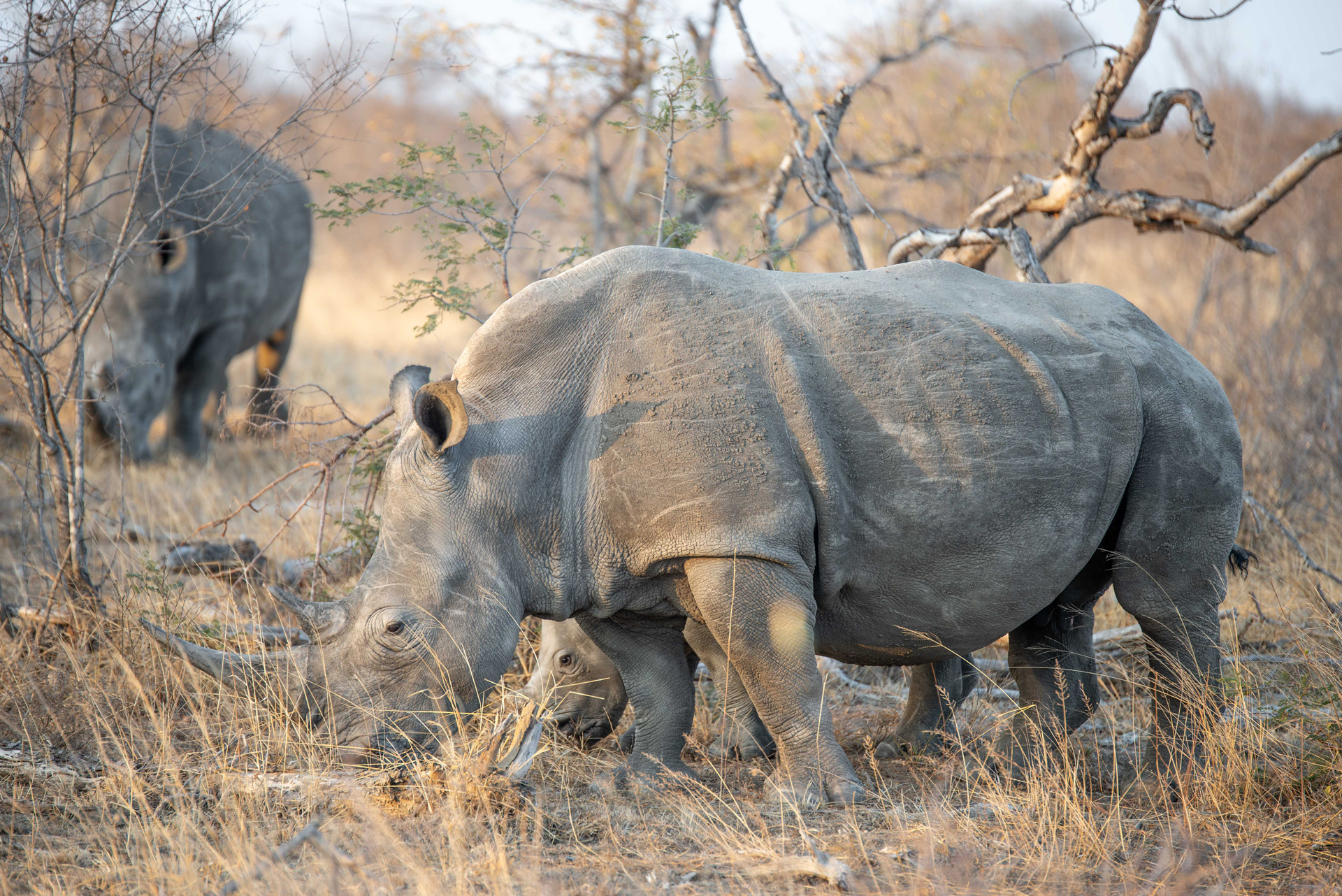
ABOUT THE AUTHORS
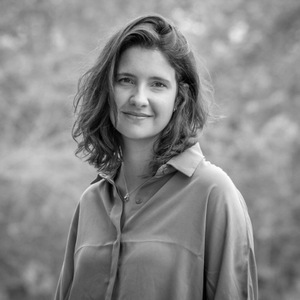 Natalia Gaal
Natalia Gaal
Natalia Gaal is a Brazilian photographer passionate about wildlife. She graduated in civil engineering but always knew that the big city life wasn’t for her and only truly feels at home around nature. Her main goal is to use her images to spread awareness about wildlife conservation.
 Samuel Cox
Samuel Cox
Samuel Cox originally studied filmmaking, earning a BA Honours degree in filmmaking before moving his sights onto photography. Travelling to Africa since 1999, his passion for wildlife quickly drew him to focus on photographing the diverse wildlife the continent has to offer and has seen his images published online with National Geographic and Africa Geographic, with printed publications in Travel Africa Magazine and BBC Wildlife Magazine.
Wanting to put aside work photographing weddings and events in the UK for a life and career in Africa, he dipped his toes into the water by volunteering with African Impact in Zimbabwe and South Africa – using his camera skills to aid in conservation efforts. Since then, he has joined the team at African Impact in the Greater Kruger National Park as the Photography Coordinator, teaching wildlife photography to international volunteers while also contributing to conservation and local community-based projects.
To comment on this story: Login (or sign up) to our app here - it's a troll-free safe place 🙂.![]()






